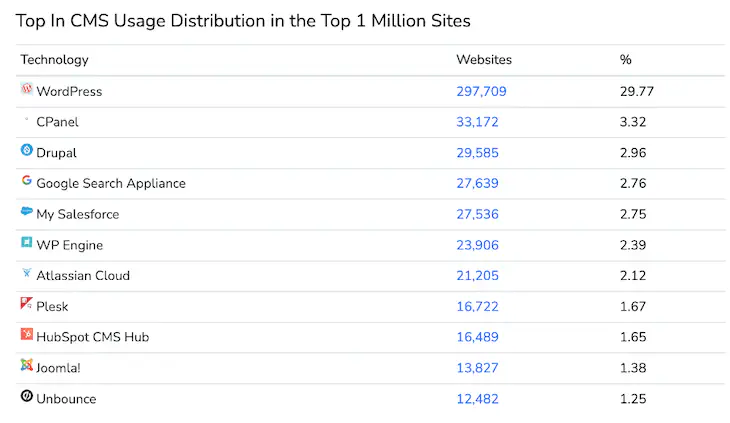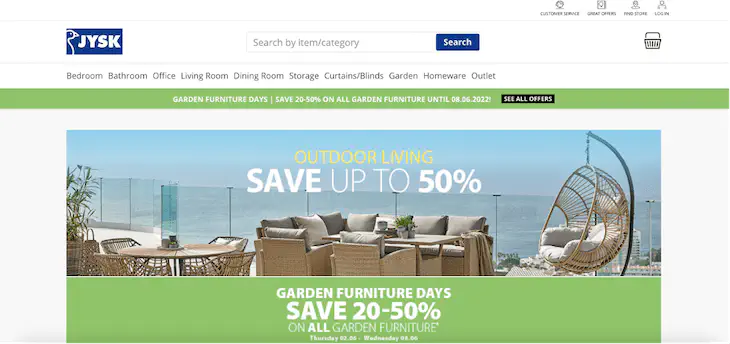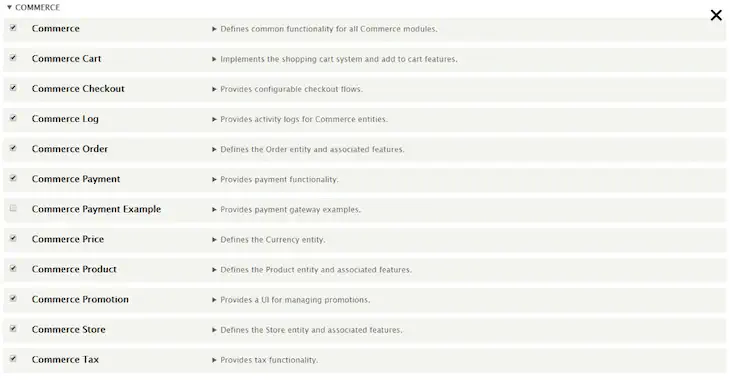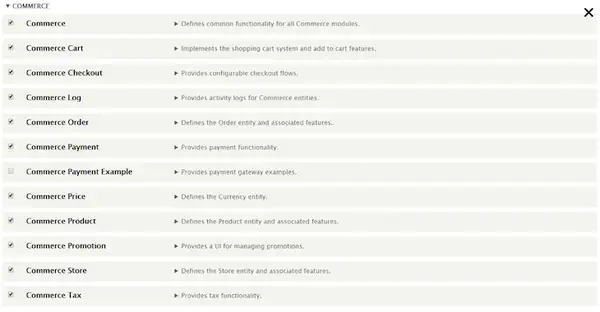The last three years have been a roller coaster for the eCommerce industry. While part of the offline small and medium business was closed, another online part continued to fight for customers. Firstly, Covid and the war in Ukraine influenced Drupal eCommerce development and online sales worldwide.
According to Statista, retail eCommerce revenue in the US was estimated to be around 768 billion dollars in 2021. By 2025, online shopping revenue in the United States is predicted to exceed $1.3 trillion. Isn't that a good reason to finally build a Drupal 8 eCommerce site? This article provides answers to the most popular questions about Drupal eCommerce development, such as:
- Who will use Drupal Commerce in 2022?
- Can Drupal be used for eCommerce at all?
- Why create an eCommerce site with Drupal 8/9?
- Is Drupal good for eCommerce?
- How to build an eCommerce website with Drupal?
- How much does it cost to build an eCommerce with Drupal?
- What modules to use for Drupal 8/9 Commerce?
The benefits of online shopping are not going away any time soon. This blog will be long but promises to be interesting and informative for those planning to create an eCommerce site and those who already have it and want to improve it.
Can Drupal be used for eCommerce?
Drupal was launched back in 2001. Despite the "venerable age" of this CMS, it has gotten much better with time. Drupal is an open-source CMS constantly being improved and expanded by a large family of web developers. This means that it has become the most flexible, secure, and scalable CMS for building a site of any complexity. Keep in mind that Drupal is ideal for online sales around the world thanks to its support for all currency, language, and tax requirements.
Why choose Drupal for your business? At least because with Drupal, you can build a site of any complexity and size.
Drupal CMS is suitable for:
- university
- government organisation
- not a government organisation
- microsite
- market
- restaurant
- healthcare and medical website
- the property
- consulting sites
- and other areas
Following the last update on CMS usage distribution for the top 1 million sites, Drupal placed deluxe third place.


Top 4 famous Drupal eCommerce websites
A statement is just a statement unless it is backed up with examples. Discover which brands use Drupal Commerce and what the sites look like.
1. JYSK
Danish retail chain JYSK A/S distributes household goods like mattresses, furniture, and interior décor. Jysk has over 3,100 stores in 49 countries. A clear compilation is essential in a store with many different categories of goods. Thanks to Drupal's power and solutions, users will easily find what they want on the site.
Client panels are also an essential and interesting option. The Drupal 8 eCommerce platform keeps track of customers’ order history and offers an easy and convenient way to save your favourite products.


2. Artellite
Artellite is an eCommerce project that exists to help artists and galleries from all over the world sell and market their products. The main feature of this Drupal e-commerce website is the synchronisation of all pieces of art from the different microsites. Once customers decide to buy an artist's work, they will be redirected to the leading site, where they will make the purchase. Drupal helps you manage all the operations involved in maintaining customer relationships and promoting the art network.


3. Muzeo
The website Museo is an eCommerce platform run by a French art gallery to distribute and reproduce artwork. They have an attractive, easy-to-navigate website with all the settings necessary to make shopping simple and secure. The homepage is easy to navigate, thanks to Drupal's e-commerce. It supports a wide range of other features such as newsletter subscriptions, reviews, secure payments, comments, alphabetical search, and integration with third parties like Keepeek to facilitate viewing thousands of videos.


Why create an eCommerce site with Drupal 8/9?
There are several benefits to creating your eCommerce website in Drupal. It's great for those who plan to work with product catalogues or even databases. Drupal combines a powerful marketing, digital experience, and SEO tool. In a word, everything you need for successful eCommerce is in a single place. Drupal allows users to sell products around the globe using multiple currencies, languages, and tax requirements. In addition, the systems are extremely secure due to the fact that many security tests are conducted globally.
7 compelling reasons to build an eCommerce website using Drupal 8/9 and Drupal Commerce
Reason #1. Unlimited scalability
This is perhaps the most demanding digital requirement in eCommerce. Drupal CMS is highly scalable and can support the proper functioning of a site of any size. Everyone starts small and then grows into something big and powerful. The big advantage of Drupal is its flexibility. At first, you can add the minimum set of necessary functions to your online store and improve later, if necessary, expand it without having to redo everything radically. Thus, you do not overpay for unnecessary options; you simply develop your business when you are ready.
Reason #2. Content-driven commerce
Content is significant in sales as it is part of an SEO strategy. Simply put, you won't be able to sell your product or service without content. Drupal has positioned itself as a content-driven eCommerce CSM since its inception. Site administrators can add blogs, product descriptions, or any other content, and SEO optimise it without any additional effort.
Reason #3. Multilingual online store
People speak a variety of languages in the world, not just English. Among the most spoken languages in 2022 are Chinese, Hindi, and Spanish. Creating a multilingual eCommerce site can reach global buyers and increase your income.
Multilingual eCommerce sites can be easily created with Drupal Commerce. There are no restrictions on how customisable the site can be. So you can count on the Drupal website development team to build a multilingual online store for you in no time.
Reason #4. Simple integrations
What is a user-friendly online commerce site? For example, when you can log in through mail or social networks; when payment can be made through various payment gateways; when you can find the social media buttons on the site and follow them to learn more about the brand, and many other reasons.
So, integration with third-party services allows you to implement all these features. You can also get insights from analytics services and connect customer services management tools such as HubSpot, Gorgias, and more using third-party integrations.
Reason #5. Secure eCommerce site
Every minute, someone's website is hacked. The security of your website, payment details, and customer details are among the top priorities in eCommerce. Drupal contributors work to ensure your websites are secure. Your site becomes more secure as each new version of Drupal is released. Develop a well-protected eCommerce website using Drupal 8 or 9 and Drupal Commerce.
Reason #6. Mobile-friendly
According to Statista, in 2021, 276.8 million people in the US have used their mobile devices to search the web. This figure is projected to exceed 287 million mobile Internet users by 2023. Your mobile app or website must function correctly to generate more leads and increase sales. A few years ago, everyone used computers to purchase or search for information. Nowadays, you can do everything on your phone. That's what digitalisation is all about. Drupal 8 and Drupal 9 are both mobile-friendly platforms.
Reason #7. No customisation limits
The web design, UX, and every other part of your Drupal eCommerce site can be changed. You can unlimitedly change the look of your online store, customise product filtering, add tax calculations for ease of use, allow payment in multiple currencies, and much more.
Believe us, thousands of modules, distributions, and themes will definitely be enough for you to create your own unique and convenient Drupal online store. With Drupal, you can:
- Create a product catalogue with different categories
- Organise the search
- Create a product card with the required fields
- Add item to cart
- Connect various payment systems
- Set up data exchange with accounting
Is Drupal Good for eCommerce? — The answer is obvious! All of these seven reasons just prove the answer.
Extra Drupal eCommerce modules to extend Drupal 8/9
Drupal has many powerful Drupal eCommerce modules. Over a hundred modules are available on Drupal.org. Here you will find a few of the most important modules.
With this module, PayPal Website Payments Standard can be used to pay for purchases through Commerce Marketplace with PayPal. It was last updated in April 2022. This is working with Drupal 7, 8, and 9.
This module lets you control what happens when an entity is viewed on its page. It displays an access and denied page or a “not found” page and issues a page redirect to any external URL. Ukrainian developers maintain this module. It was last updated in March 2022. This is working with Drupal 7, 8, and 9.
Inspired by Mac apps Alfred and Spotlight, the Coffee module makes navigating through the Drupal admin screen easier. It was last updated in February 2022. This is working with Drupal 7, 8, and 9.
The Commerce Shipping module integrates Drupal Commerce's shipping service into the checkout and order edit forms, allowing users to calculate shipping costs. This module is used in conjunction with Commerce UPS, Commerce Flat Rate, and other modules. It was last updated in May 2022. This is working with Drupal 7, 8, 9, and 10.
A CPT module lets you choose different tax rates for a product variation, so you can choose which one to apply. It was last updated in November 2021. This is working with Drupal 8 and 9.
The Inline Entity Form enables editors to easily and quickly create, edit, and delete entities within a single form. It provides a widget for managing entities inline. The entities will be saved when the main form is saved. It was last updated in May 2022. This is working with Drupal 7, 8, and 9.
With this Drupal module, you can add the Entity Reference field type. This module is based on Entity Reference's core functionality but allows you to reference a single revision of the entity. You can use this with modules such as Paragraphs and Inline Entity Forms. It was last updated in March 2021. This is working with Drupal 7, 8, and 9.
Paragraphs is one of the top Drupal eCommerce modules related to ease of content creation. By using this, you can create and handle the content easily. With it, you can organise, group, and design your content according to your requirements. It was last updated in April 2022. This is working with Drupal 7, 8, and 9.
It is easy for buyers to convert currencies on your website with the Commerce Exchanger module. Modules like this are useful for users who sell goods or services worldwide and receive payment in several different currencies. This module provides currency conversions quickly. It was last updated in April 2022. This is working with Drupal 7, 8, and 9.
This module is a handy assistant in billing and storing information about purchases. Adding custom invoice states to the five standard states is also possible. Plus, the invoice can then easily be exported in PDF format. It was last updated in April 2022. This is working with Drupal 7, 8, and 9.
The Drupal SEO Checklist module uses the most powerful and up-to-date methods to check your e-commerce site for compliance. It shows all your weak spots and helps you improve them for better SEO. It was last updated in August 2021. This is working with Drupal 8 and 9.
Role Expire is an easy module whose purpose is to help you set up and control the expiration of user roles. It will be especially needed for those who sell courses with access only for some time. It was last updated in February 2022. This is working with Drupal 7, 8, and 9.
The Google Analytics module integrates Drupal's most powerful SEO tool with your website. By installing it, you will receive complete online information about the essential data of your site and visitors. It was last updated in February 2022. This is working with Drupal 7, 8, and 9.
How to create an eCommerce website in Drupal?
There are many different CMS like Drupal or off-the-shelf website builders like Wix. The larger and more serious store you plan to create, the more flexible and powerful CRM and e-commerce platform you need. The first step in creating an online store is to determine the technology on which you will build your store. Technology is like the land on which you build a house. Since we are a Drupal web development company, we will guide you on how to create an eСommerce website with Drupal.
Step #1. Download and install the Commerce module
The Commerce Core module will add essential features to your sites, such as Products, 100+ Payment Gateways, Order types, Line Items, Tax calculations, and VAT support.
Step #2. Install the required Commerce submodules
Open the Advanced tab and enable the following modules. Your future store won't work properly until you install the required Commerce submodules:
- Tax
- Cart
- Order
- Log
- Payment
- Price
- Product
- Store


Step #3. Find and set up the new Commerce menu
Next, a new menu will appear to you on the admin page. To get started, click Commerce, then select Configuration. Customise your store to suit your needs. For example, you can add multi-currency. Thus, you will allow users to pay for purchases at a convenient time for them.
Step #4. Add new products
Adding new products and information about them should be your next step. Give it a title, an attractive photo, and a short description.
Step #5. Ask for help in creating an eCommerce website in Drupal
Drupal requires solid coding skills to run an eCommerce site. The Internet has numerous guides on how to create drupal eCommerce, but they likely won't help you. Self-development of an online store on Drupal is almost impossible without the help of professionals. Drupal is a powerful and feature-rich CMS requiring knowledge, time, and experience.
Why don't you do what you're good at, and we'll do what we love?
How much does it cost to build an eCommerce with Drupal?
And, of course, the main question that interests everyone: "How much does it cost to create an eCommerce site?""
Looking ahead, let's say it depends on your expectations. A house can be built for $5,000 or $55,000. It depends on the quality and quantity of features.
Eсommerce websites are one of the most challenging types of websites to implement. It includes integration with third-party services, shopping cart settings, responsive design and theme selection, secure payments, easy product addition, and much more. The estimated time of completion is approximately 250 to 300 hours. Also, the price will vary depending on your preferences.
You need a help building a web application? Drop us a line here.
Written by:

Oleksandr Dekhteruk
Senior PHP Developer
Oleksandr is a distinguished Senior PHP Developer specializing in Drupal, bringing extensive expertise to the realm of web development. With a focus on precision and proficiency, Oleksandr excels in custom module development, theming, and site building within the Drupal framework. His in-depth knowledge of PHP, coupled with a strategic understanding of Drupal intricacies, positions him as a reliable architect for crafting scalable and high-performance web solutions
Read more like this:

Oleksandr Bazyliuk
When and why to use Drupal 9 multisite?

Oleksandr Dekhteruk
Everything You need to know about Drupal hosting

Oleksandr Bazyliuk
Create a custom theme in a simple way in Drupal 9

Ewelina Zwolenik
CSS Flexbox vs CSS Grid explained
Got idea?Let’s talk about your project
Schedule a call with us